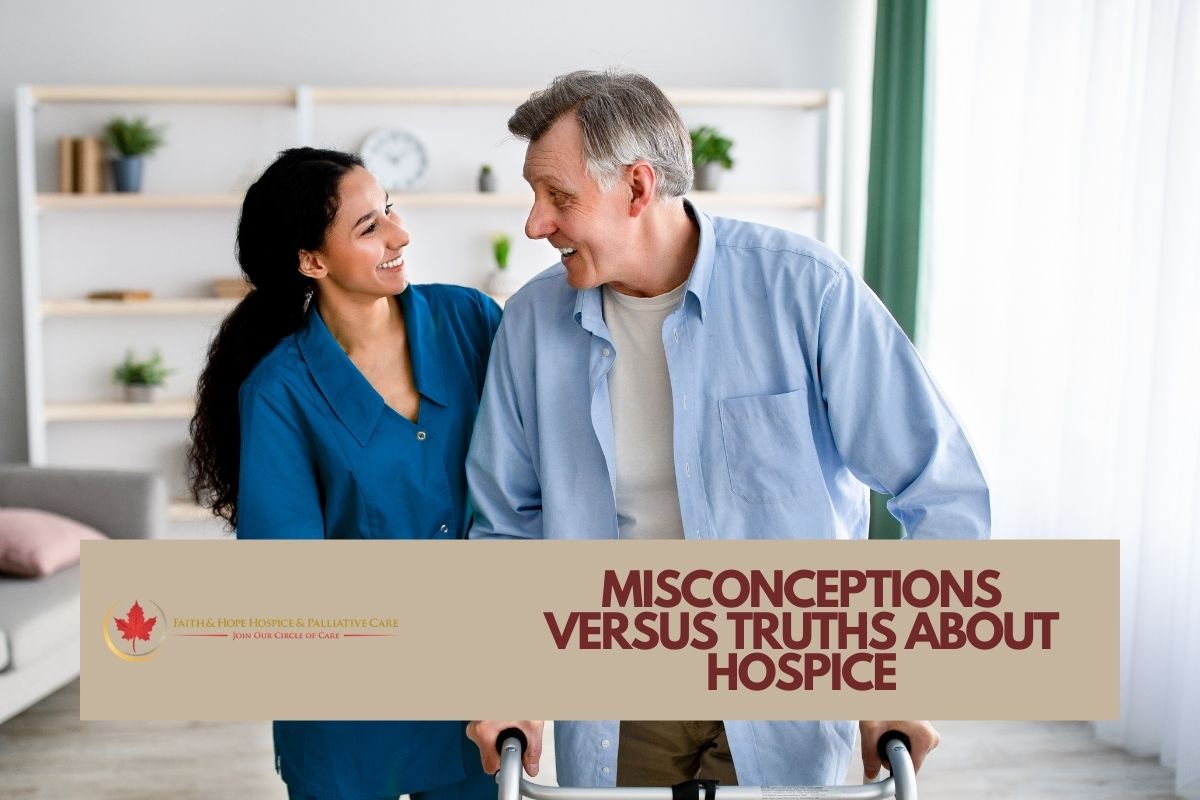
- By: administrator
- Blog
- No Comments
When it comes to hospice care, there’s a great deal of conflicting information about what is actually fact and fiction, which can lead to a source of trepidation for people who are considering the option for themselves or their loved ones. In order to instill confidence in this option, let’s go over some facts about hospices so as to dispel the myths that have attached themselves throughout the years. This will also build a better level of trust of patients in the hospice care that could be available to them.

Expenses
Contrary to what many people may believe, Hospice care is not as expensive as you might think. It is, in fact, completely covered by Medicare or Medicaid programs. This will allow you to reap the full benefits of the program, including having access to the finest nurses and doctors, medication, and services that can make someone’s stay that much smoother.
Location
Another fable that comes with hospices is the idea that they are only available at hospitals. In reality, a hospice can be held at any number of places, including but not limited to the patient’s very own home, to maximize their comfort level. Among the most popular areas are usually assisted living areas or nursing homes that feature communities where other patients can socialize and feel included. Essentially, a hospice can be provided where a patient will feel most comfortable, catering to their needs when they require them the most.
Reasons for Care
There can be numerous reasons why people get into hospice care, and the number of ailments that can qualify you as a candidate under such a program is many. You could be suffering from lung disease, Alzheimer’s, dementia, or other long-term or terminal illnesses that could be giving you a great deal of complications. When applying for such a program, don’t be afraid to keep your options open if you or a loved one is in a state that could allow them to participate in hospice and/or palliative care in Los Angeles.
Control
Also remember, that when a patient starts hospice, they are completely in control of their own destiny. You need to remember that even though your body may be in a fragile state, it is ultimately up to you to receive continued treatment from the hospice program you are a part of. If you want to end the program, that is entirely in your power and your choice. This can be especially helpful for those whose state of health improves over time and who no longer need hospice care in Los Angeles. And don’t be afraid of leaving if you feel you’re healthy enough but could physically deteriorate later on. You could always come back after applying once more should you need to do so.
Support for the whole family
A hospice doesn’t just assist those who are suffering from terminal illnesses. A hospice can also assist those who are grieving from the loss of a loved one. When a family is suffering emotionally from the loss of someone that they cared for, a hospice will give them the best advice and lessons on how best to deal with the grief and how they can best tackle life’s problems with it.
Helping appreciate time
Another misconception that often falls in line with hospices is that many simply believe that it is a place where dying patients go to die when this is a gross oversimplification of what a hospice can offer to people who are in need. Receiving hospice care is more about coming to appreciate the time that you have left with those around you and finding ways in which you can make the most out of it. Part of fighting the disease that you are unfortunately saddled with is having the mental wherewithal to fight it with a strong disposition. With some tough mental fortitude assisted in part by those working in your hospice, your time with your loved ones could wind up being longer than you may have initially anticipated.
Medical Decisions
On top of being in control over how long you want to continue hospice as well as if you stop services or not, you also have control over many medical decisions. Such crucial decisions that you can affect include your medication and whether you would like to take it or not, along with still having access to other Medicare or Medicaid benefits. You can indeed still have access to and consult your doctor unaffiliated with your hospice care along with the other perks that come with it, giving you a great deal of range and options that can be at your disposal. When you sign up for hospice, you’re most definitely getting your money’s worth, so don’t be wary of using it fully to your advantage.
Extended Life
With the benefits that come with being part of a hospice program come the potential of being able to live longer and healthier lives than you may have initially imagined. After all, you can still enter hospice even if you aren’t at death’s door with only months to live. In some cases, the sooner you sign up, the better chance you have at living a longer and healthier life, which should be taken advantage of at your earliest convenience. Never forget that this is a program that is fully set to help, and contrary to many myths out there, it’s not a place where you’re left to pass away conveniently. It’s filled with bright individuals who will be working around the clock for your convenience.
Conclusion
From all of these facts that we can see, there are plenty of stigmas and myths that have come to be associated with hospice in Los Angeles, CA. But for those who can see through such misconceptions, it is best for their declining health to get the most dependable aid that their health benefits or insurance can find.
